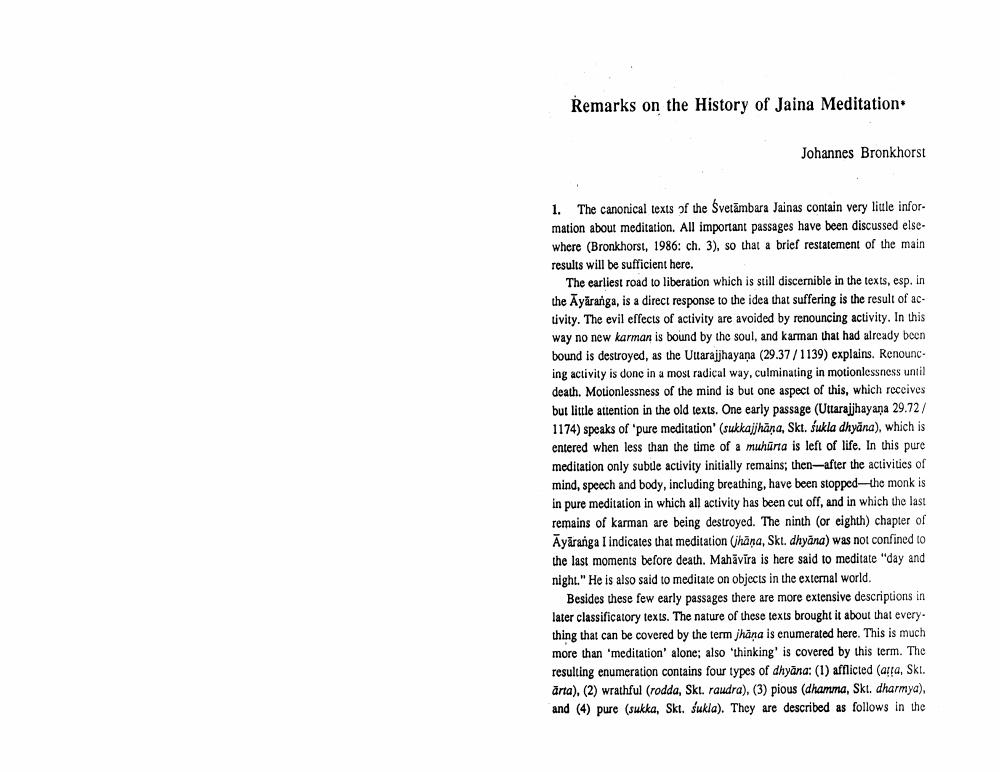Book Title: Remarks On History Of Jaina Meditation Author(s): Johannes Bronkhorst Publisher: Johannes Bronkhorst View full book textPage 1
________________ Remarks on the History of Jaina Meditation Johannes Bronkhorst 1. The canonical texts of the Svetāmbara Jainas contain very litle information about meditation. All important passages have been discussed else. where (Bronkhorst, 1986: ch. 3), so that a brief restatement of the main results will be sufficient here. The earliest road to liberation which is still discernible in the texts, esp. in the Ayäranga, is a direct response to the idea that suffering is the result of acuvity. The evil effects of activity are avoided by renouncing activity. In this way no new karman is bound by the soul, and karman that had already been bound is destroyed, as the Uutarajjhayana (29.37/1139) explains. Renounce ing activity is done in a most radical way, culminating in motionlessness until death. Motionlessness of the mind is but one aspect of this, which receives but little attention in the old texts. One early passage (Uttarajjhayana 29.72/ 1174) speaks of "pure meditation (sukkajjhana, Skt. sukla dhyāna), which is entered when less than the time of a muhūra is left of life. In this pure meditation only subtle activity initially remains; then after the activities of mind, speech and body, including breathing, have been stopped the monk is in pure meditation in which all activity has been cut off, and in which the last remains of karman are being destroyed. The ninth (or eighth) chapter of Ayarangal indicates that meditation (hana, Skt. dhyāna) was not confined to the last moments before death. Mahāvīra is here said to meditate "day and night." He is also said to meditale on objects in the external world. Besides these few early passages there are more extensive descriptions in later classificatory texts. The nature of these texts brought it about that every thing that can be covered by the term jhana is enumerated here. This is much more than 'meditation alone; also thinking' is covered by this term. The resulting enumeration contains four types of dhyāna: (1) afflicted (arta, Skt. arta). (2) wrathful (rodda, Skt. raudra), (3) pious (dhamma, Skt. dharmya) and (4) pure (sukka, Skt. sukla). They are described as follows in thePage Navigation
1 2 3 4 5 6 7
